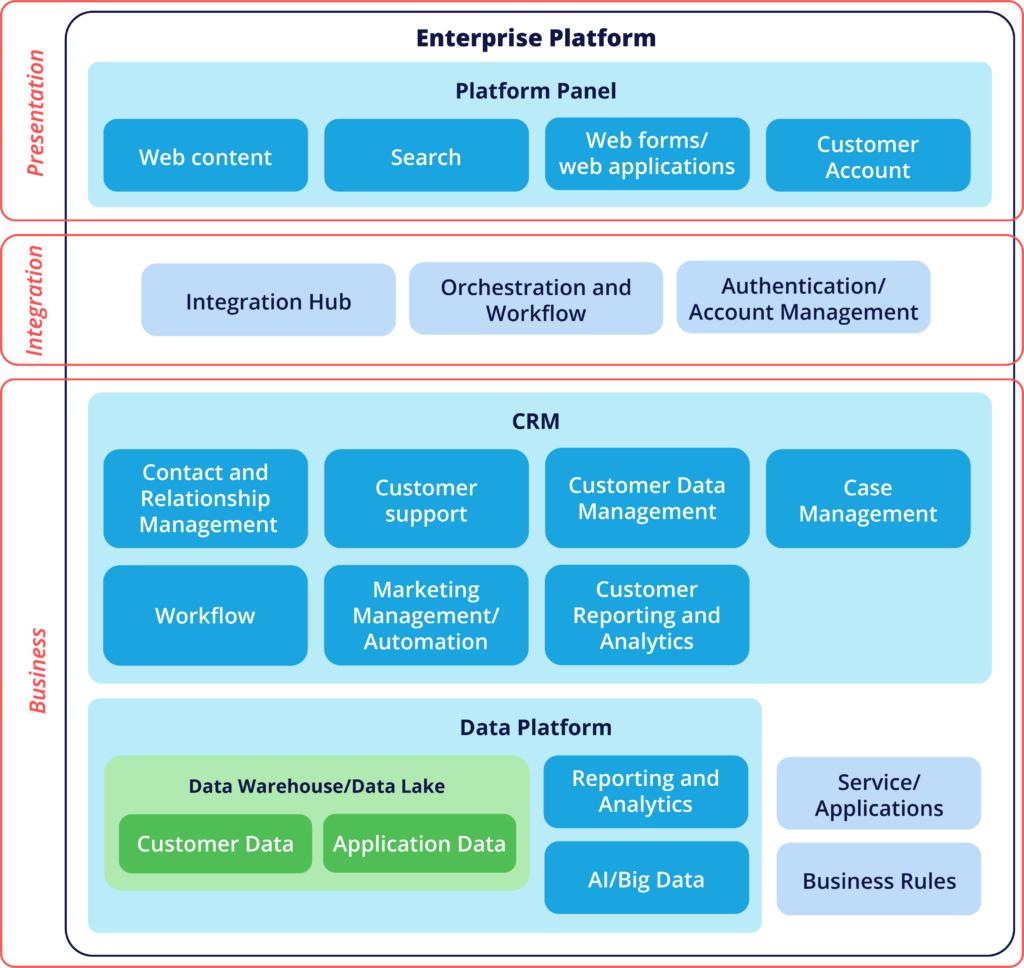Many councils in the UK use a Customer Relationship Management (CRM) system. Most are likely looking for that single view of their customers, that single source of the truth to who their customers are and how they interact with the council. It’s beyond doubt that having the view of your customer’s digital interactions is invaluable, and done well, with all of your back office systems linked, it is certain to drive improved customer experience and process efficiencies.
But do you need a new CRM system? Do you need to invest in new technology and a major change project to achieve your vision, or do you already have solutions within your estate that could serve your CRM needs?
Our expert consultants share their views in this blog.
Start with why
It’s a valid starting point to ask yourself, do you need a CRM system, and to answer that you need to start by asking yourself, what is it that you want to do as an organisation, what are your drivers? When you say CRM what do you mean in terms of capability? That’s the real starting point, to understand the business need and the user need. With this you can start to investigate your options to determine whether something in your existing estate will fit the bill or if you might need to look for a new solution.
Your need might stem from any number of areas within your council, for example:
- A legal requirement in which case a specialist contact management system might be required
- A customer case load requirement, in which case the CRM functionality within a telephone or unified communication solution might be appropriate
- A council-wide transformation programme, in which case an enterprise solution such as Salesforce or MS Dynamics might be required, which can be used as a platform to build out from
And once you have your why, you can then consider your measures, as once they are agreed and monitored, at any point you will know how well the solution is working and where it can be improved.
Don’t jump to technology
Quite often we will see organisations fail to consider their strategic objectives and user needs first, instead jumping to a CRM technology solution. In that case, it can be difficult to successfully implement the solution and you could end up with technology that doesn’t meet your needs. There are a lot of technologies you can put under the banner of CRM, so failing to understand your drivers and set your objectives at the outset means you can’t appraise the suitable options.
Consider your operating model
CRM solutions can be very expensive. Using publicly available information from software vendor websites and via framework contracts, we estimate that at the lower end the cost might be £50,000, with annual maintenance of around £49,000; and at the upper end, the cost could be £4 million, with annual maintenance of £300,000. So it’s a decision to get right first time!
Two key considerations:
1. Target operating model
- Who will support and configure the solution once it is in place, do you have the skills in place already, or what is the skills gap and how can it be filled?
- Can you rationalise the processes that will be enabled by the solution, so that the number of staff that need licenses is minimised?
- Can you automate the process to increase the benefits from the new solution?
Licensing can be complicated, particularly with expensive solutions, so understand the licensing model as part of your options appraisal.
Developing your operating model and optimising licensing will give a view of total cost of ownership for the solution.
And finally, you are most certainly going to be dealing with customer’s personal information, so security is an important consideration when you are reviewing your options.
2. Architecture review
How will the solution integrate with the wider architecture to optimise the value of your CRM data? You need to consider the overall architecture to ensure you get the value out of it. As context, the below diagram shows the components of CRM and where they might sit in relation to the rest of your architecture.

Avoid the pitfalls
A CRM programme can be costly, so it’s important to avoid the common pitfalls.
- Early market engagement – it is key to engage and understand the standard market solutions which will help you shape your procurement documentation and achieve the best ITT response.
- Procurement routes – establish the procurement routes to market available to you and the CRM solution providers that are accessible via those routes, to ensure that you have a clear route and method to procure the solutions available.
- Adopt, don’t adapt – CRM programmes can take longer to implement than expected, particularly if you customise the technology to match your processes rather than using it out of the box. Our top tip to realise benefits from your investment – adopt the system, don’t adapt it.
- Consider your support model – fail to consider who is going to support your solution and you may be over-reliant on third parties to support, build and develop your system, which if not in-house, could be an expensive burden.
- Set expectations – understand your why, understand the values and the measures, so that the solution matches and delivers on expectations, and avoids becoming a project with a bad reputation.
Getting started
It is important that you take a holistic view of your organisation, and an independent view will likely be more objective to your overall business needs.
A service design approach is a good starting point to understand your existing capabilities and what CRM can do to deliver against your requirements, how it could be optimised, what the operating model could look like, and ultimately, how it supports your strategy.
Socitm Advisory – a strategic advisor
As an independent strategic consultancy, our consultants would work with you to understand your requirements and set out clear recommendations. We would do this with solid discovery work upfront, reviewing your existing strategies, meeting stakeholders to understand your strategic objectives and your drivers, to identify where you see CRM supporting you to deliver your objectives.
Our work might include:
- A capability assessment, to establish your current internal capabilities looking at people, skills, processes, and technology
- Workshops and stakeholder interviews, to understand the user needs and where a CRM solution could improve the user experience and the customer experience
- A review of potential costs versus potential value
- Supporting the development of an outline business case
Conclusion
There is no right answer to the question, do you really need a CRM system? The decision ought to be firmly focused around what you want to achieve as a business. A review of what you currently have in place, aligned with what you might need in the future, to deliver your objectives. Consider the key factors outlined in this blog, that will help the successful implementation of the right CRM solution for you, and consider the expert advice you could seek to help your decision and its future support.
And above all, if you start with the why, you’ll set yourself on the right track.

Get in touch or book a meeting with our Account Director, Alex Fillingham, to discuss your ERP transformation journey with us.
